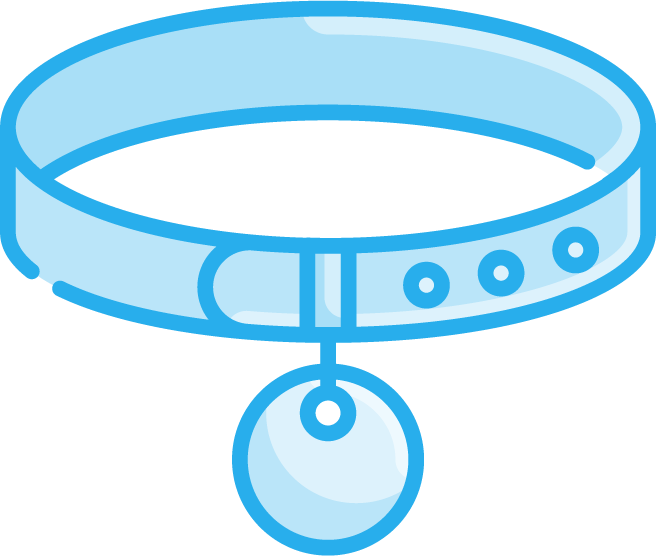Some puppy tips

A puppy is a living being that has a need for love and proper care for the rest of his life – not just sufficient rest. He needs to be fed often while young, and a young puppy is especially vulnerable to broken bones and other injuries from careless treatment.
Children as Caretakers
A puppy should not be obtained to only instill a sense of responsibility in children. It is unfair to place an animal’s entire well being in the hands of children. Feeding, grooming, housebreaking, and discipline training of an animal should be the principal responsibilities of adults. Responsibility training of children is better left for household tasks, where a helpless animal’s needs are not at stake.
Consider Lifetime Expenses
The purchase price or adoption fee for a pet is nothing compared to the cost of veterinary care for routine and emergency treatment over the dog’s life, as well as licensing fees and damages to personal property which are bound to occur.
Additional Work Around the House
Dogs can neither groom themselves nor clean up after themselves (accidents, shedding) and, therefore, impose additional workload in a household.
Having neither the physical nor the mental abilities of an adult dog, a puppy cannot wait long periods of time before relieving himself nor differentiate between what is a toy and what isn’t nor distinguish between digestible and dangerous objects. They require patience, understanding, and supervision just as with human infants and young children. A puppy doesn’t mature into an adult dog for at least 2 years. If you work and don’t have time for training and play, get an older dog.
Commitment to Your Puppy’s Lifetime
They need your love and care forever. Be sure that you understand the long-term and lifetime commitment involved before making this very important and responsible decision.
Meals
Feed a high quality diet designed for puppies. A wide variety of diets and formulations are available and your veterinarian should be your primary source of information as to the best choice for your puppy. The amount fed will vary with the type of food and the individual dog, but in general, should only be as much as the puppy can consume in 5 to 10 minutes at a given meal.
Puppies are usually fed 3 times daily when between 6 and 12 weeks old, 2 times daily when 12 weeks to 6 months old, and may be fed 1 or 2 times daily when older than 6 months. For certain large breeds of dogs, your veterinarian may recommend that several smaller meals be fed rather than 1 large meal (even when your dog becomes an adult) because an association has been suggested between the consumption of large meals and a serious medical condition called gastric dilatation/volvulus or “bloat.”
Health Exam/Vaccinations
You will want to have your new puppy examined by a veterinarian to ensure that it has no major health problems and is started on a program of preventive care. Your puppy’s health care plan includes a series of vaccinations against distemper, parvovirus and corona virus (gastrointestinal diseases), infectious hepatitis, and respiratory infections (adenovirus, parainfluenza, and bordetella).
Vaccination protocols are designed on the basis of your puppy’s risk of infection and may vary depending upon your puppy’s age, breed, and environmental exposures (e.g., in certain locales, vaccinations for Lyme disease and leptospirosis may be considered standard parts of the protocol). Vaccinations are usually given at 3-week intervals from 6 to 16 weeks of age. At 12 weeks of age, the puppy receives its first rabies vaccination.
Puppies should be checked for intestinal parasites (usually 2 stool samples 3 weeks apart), fleas, and heartworm disease (depending on age), and appropriate treatment or preventatives administered.
Grooming
Regular brushing, bathing, and nail care are essential. Protect your puppy’s eyes and ears when bathing, and don’t allow the puppy to become chilled after bathing. Your veterinarian may recommend that you do not bathe your puppy when it is younger than 10 to 12 weeks unless absolutely necessary (especially if your puppy is one of the smaller breeds).
Crate training is proven to be the fastest, most cost effective method of instilling “good dog” behavior. A dog’s natural instinct is to keep the area in which she rests as clean as possible. Most dogs are very resistant to being near their own waste and therefore will make an extra effort to control their own elimination when confined to a crate. By the owner encouraging elimination in the proper place immediately after a dog is released from the crate, the pet quickly learns when and where to “take care of business.” This is a proven method of house training recommended by nationally known trainers.
WHY DO DOGS LOVE THEIR CRATE?
Dogs are, by nature, den animals and feel secure in small, enclosed spaces. Most dogs will seek out a place in your home that will mimic a den. You will often find them sleeping under a table or desk. Dog crates make excellent dens and can serve as a refuge, a hangout and a bedroom. It is very important that the dog crate is never used as punishment; the crate must always be regarded as a safe and special retreat. The most common misconception about a dog crate is that it is a cruel form of caging a pet. This is completely false, and in fact, a dog will actually find a crate to be a secure and safe sanctuary in the same manner as a wolf enjoys the comfort of a den for resting and eating.
SIZE
When selecting a crate for a puppy, go ahead and get one that will fit the dog’s size when it is fully-grown. The size of your crate should be large enough for the puppy to walk in, stand up and turn around, no larger. If the crate is TOO large, the puppy may use the restroom in the unoccupied corner. Make sure the crate you purchase has a removable divider panel to allow you to adjust the crate to the size you need.
FOOD/WATER
Try NOT to put food in the crate as it induces using the bathroom. You may add a small amount of water (especially for puppies) but keep in mind this induces urination.
BEDDING
It is recommended that NO bedding or newspaper be put in the crate. The puppy may use the restroom on these items, cover them up and will not learn quickly.
TIPS TO CRATE TRAIN YOUR PUPPY
Your crate should be placed in a “people” area such as the kitchen, family room, or bedroom so your pet will be able to interact with his “pack”. Keep the crate away from drafts or direct heat. You may also want to put a blanket over the crate at night.
Remove any collars or tags before placing the puppy in the crate to prevent possible strangulation.
Allow your dog to explore the crate on his/her own. You can toss favorite toys or treats inside and show interest in the crate to encourage the puppies’ curiosity. Leave the door open during the introduction period, NEVER force your dog into her crate and ALWAYS praise her anytime she enters on her own. If the puppy barks or cries while inside her crate, reassure her and wait for her to settle down before allowing her out of the crate. You do not want her to associate negative behavior with being released from the crate.
In the beginning of training your puppy, take them to the same area outside. This will help the puppy associate where to use the restroom. Also, pick the puppy up and carry them outside in the beginning, this will prevent “accidents” on the way. GENERAL CRATE TRAINING SCHEDULEHere is an example of a “general schedule” you may follow to better help you and your puppy. Puppies between two – four (2 –4) months may need to eat three (3) meals per day depending on activity. Smaller puppies under three (3) pounds need to be feed every few hours to prevent hypoglycemia (Refer to page four (4) regarding hypoglycemia). If no one is able to come home for lunch, modify the schedule, place the puppy in an isolated area such as the kitchen or bathroom, and skip the afternoon schedule. Keep in mind that crate training can take days or weeks depending on your dog’s age, temperament or past experience.
MORNING
7:00 Take puppy outside (DO NOT wait until after you’ve begun your morning routine)
7:15 – 7:30 “Kitchen playtime”
7:30 – 8:00 Give puppy food and water, place puppy in crate (Allow 15-20 minutes for digestion)
8:00 Take puppy outside
8:15 Place puppy in crate
AFTERNOON
12:00 Take puppy outside
12:15 – 12:30 “Kitchen playtime”
12:30 – 1:00 Give puppy food and water, place puppy in crate (Allow 15-20 minutes for digestion)
1:00 Take puppy outside
1:15 Place puppy in crate
EVENING
6:00 Take puppy outside
6:15 – 6:30 “Kitchen playtime”
6:30 – 7:00 Give puppy food and water, place puppy in crate (Allow 15-20 minutes for digestion)
7:00 – 8:00 Take puppy outside
8:00 – 9:00 “Kitchen playtime”
9:00 Return puppy to crate
11:00 Take puppy outside
11:15 Return puppy to the crate for the remainder of the evening
ITEMS OF CONSIDERATION
Modify the schedule to fit your lifestyle.
If family members will be gone for more than eight (8) hours, EXPECT “accidents.”
Praise/encourage your puppy when he/she does something good.
Correct your puppy while catching him/her “in the act.” DO NOT rub their nose in any “accidents”.
PATIENCE and PERSISTENCE IS THE KEY!!!
Teach children:
- NOT to reach for the dogs head the first time they meet a dog or excessively rough house around their own dog’s head or face.
- NOT to look a dog straight in the eyes, which could be seen as a threat or a challenge by the dog.
- NOT to run up frantically to a dog, which may react fearfully and defend its self or jump and bite at the child’s face.
- NOT to scream loudly at a dog, which could stress a dog or startle it, causing an aggressive response.
- NOT to bother the dog while it is eating or chewing on a chew toy, which could trigger an aggressive guarding response, especially if the child is fewer than seven of age, where he/she is looked at by the dog as a competing animal in the pack.
- NOT to hit, kick, slap, ride or tease the dog in any manner.
- NOT to leave the child and the dog alone until the child is older than 8, and can control its impulses.
- DO have the child participate in the training under direct supervision.
- DO give the dog attention when the child is also receiving attention so the dog makes a better association with the child.


